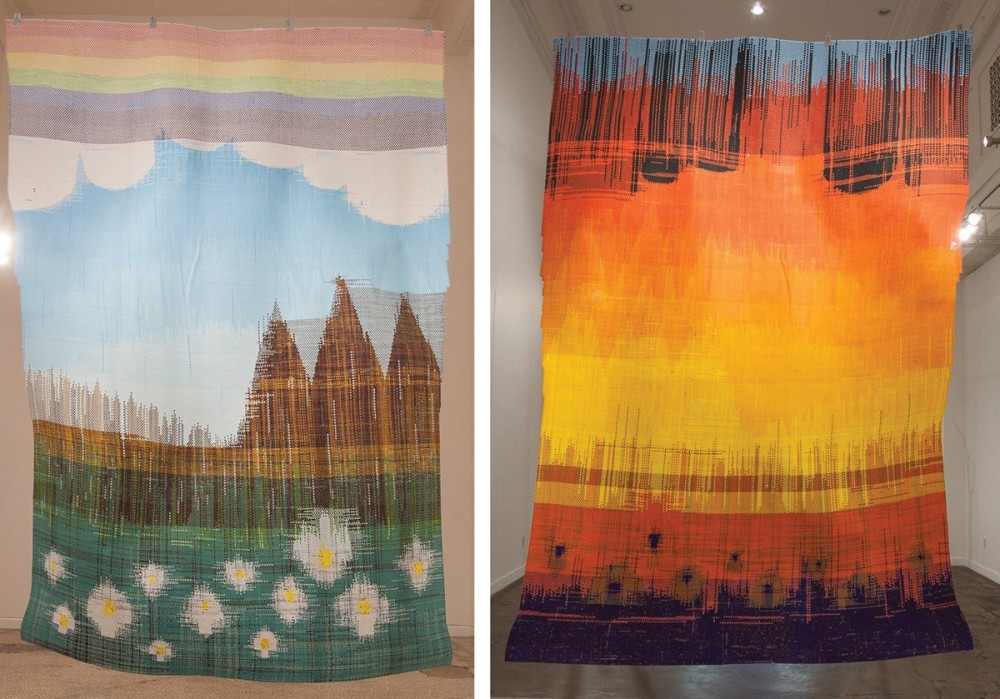Lorenzo Hurtado Segovia’s
Papel Tejido 40 (Él derrama
lluvia sobre la tierra y envía
agua sobre los campos)

(Images used by permission of the artist)
For immigrants facing hardships, family gatherings are crucial. I remember mi mamá and mis tías huddled in a bedroom with bolts of fabric and sewing accessories. The shared ritual held expectancy and accountability—hope for what was yet to come and the inspiration needed to begin projects. Thanks to Los Angeles artist Lorenzo Hurtado Segovia, I now recognize that they were also creating a sacred space.
For his papel tejido (woven paper) pieces, Hurtado Segovia cuts long, thin strips of painted paper, crisscrossing them over and under. Repetition produces woven sheets reminiscent of blankets, ceremonial robes, and tapestries. Weaving yields bright plaids, images of mountain ranges, and Christian symbols. Hurtado Segovia’s jubilant forms represent three traits needed to defy alienation: festival, craft, and play.
Papel Tejido 40 evokes Mexican folk art decorations used for fiestas. Festivals bring people together to offer reprieve from the strains of daily life. Likewise, Hurtado Segovia offers stunning woven items to nourish souls, just as fiestas set time aside for tangible pleasures that revive and feed resilience.
Hurtado Segovia represents a craft tradition in which labor ensures survival. Born in Ciudad Juárez, Mexico, he notes that, amid the poverty, “everyone in our neighborhood knew how to make things.” He told the Latin Times that his social circle—carpenters, welders, and seamstresses—taught him that “you can do it if you want to.” Craft, then, is a vehicle for self-actualization—acts of repair on multiple levels.
Exuberant play uplifts. Hurtado Segovia’s paper hangings express ongoing joy through patterning and a vivid palette. They infuse spaces with life and movement. Modest in material and method, the pieces prompt others to play along. Hurtado Segovia secures a place for wonder—a place to hope for what is yet to come and inspire the labor necessary to greet it. This is sacred space.





